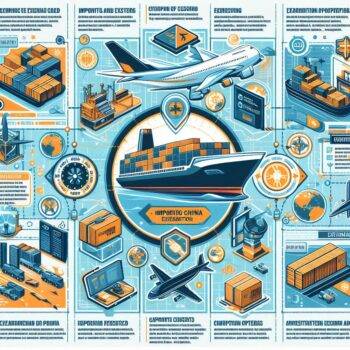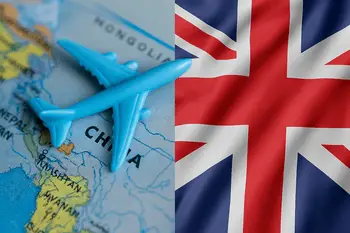
China’s trade regulations are a cornerstone for businesses navigating the global market.
As the world’s second-largest economy, China has a robust regulatory framework designed to balance trade and ensure compliance.
This guide provides a detailed overview of the key regulations, processes, and strategies for importing and exporting goods in China, complete with practical examples, tables, and resources to help businesses succeed.
The Core Regulatory Authorities
Two primary government agencies oversee import and export activities in China:
| Agency | Responsibilities |
|---|---|
| General Administration of Customs (GAC) | Enforces tariffs, manages customs declarations, and safeguards national security. |
| Ministry of Commerce (MOFCOM) | Regulates trade policies, oversees bilateral agreements, and manages foreign investment guidelines. |
Pro Tip: Businesses can visit the GAC official website and MOFCOM website for the latest updates on trade policies and procedures.
Key Regulations for Importing Goods
1. Tariffs and Customs Duties
China imposes tariffs based on the Harmonized System (HS) codes of products.
Rates vary depending on:
- The nature of goods.
- Their country of origin.
- Trade agreements in place.
| Product Type | Tariff Rate | Notes |
|---|---|---|
| High-tech products | Reduced or zero tariffs | Applicable under certain trade agreements. |
| Agricultural products | Standard tariffs | May require additional inspections and certifications. |
| Environmentally friendly goods | Reduced tariffs | Encourages sustainable trade practices. |
Resource: Use the China Tariff Finder to calculate applicable tariffs for specific products.
2. Import Licenses
Certain goods require an import license before entering China.
These include:
- Agricultural products: Grains, seeds, and livestock.
- Chemicals: Hazardous or controlled substances.
- Machinery: Industrial equipment and parts.
Licenses can be obtained through MOFCOM. Businesses should ensure all documentation is accurate to avoid delays.
3. Quality Standards and Certification
Imported goods must meet stringent quality standards.
Key certifications include:
- China Compulsory Certification (CCC): Required for products affecting health, safety, or the environment (e.g., electronics, toys).
- Inspection and Quarantine Authority (CIQA): Ensures compliance with technical and safety standards.
Example: A company importing electronic devices must secure CCC certification before customs clearance. Failure to comply can result in rejection or penalties.
Key Regulations for Exporting Goods
1. Export Duties
Export duties apply to certain products, particularly those in high demand globally or scarce in China.
Examples include:
- Steel: Subject to export taxes to regulate domestic supply.
- Rare earth minerals: Heavily taxed due to their strategic importance.
2. Export Licenses
Sensitive goods require export licenses.
Examples include:
- Controlled chemicals.
- Cultural relics.
- Rare animals and plants.
Tip: Businesses can apply for export licenses through the China International Trade Single Window.
3. Documentation Requirements
Exporting goods requires meticulous documentation.
Key documents include:
- Commercial Invoice: Details the transaction.
- Packing List: Specifies the contents of the shipment.
- Certificate of Origin: Verifies the product’s origin for tariff purposes.
| Document | Purpose |
|---|---|
| Commercial Invoice | Provides transaction details for customs and buyers. |
| Packing List | Ensures accurate inspection and verification of goods. |
| Certificate of Origin | Determines eligibility for preferential tariffs under trade agreements. |
Free Trade Zones (FTZs) and Special Economic Zones (SEZs)
China’s FTZs and SEZs offer significant advantages for international trade, including reduced tariffs, streamlined procedures, and tax incentives.
| Zone | Focus |
|---|---|
| Shanghai FTZ | Financial innovation and trade facilitation. |
| Shenzhen SEZ | Technology-driven benefits for exporters. |
Example: A company exporting electronics from Shenzhen SEZ can benefit from reduced export duties and faster customs clearance.
Resource: Learn more about FTZs here.
The Role of Trade Agreements
China participates in numerous trade agreements that impact import and export regulations. Key agreements include:
- Regional Comprehensive Economic Partnership (RCEP): Reduces tariffs across Asia-Pacific countries.
- Bilateral Agreements: For example, agreements with Australia and Switzerland reduce tariffs on specific goods like wine and pharmaceuticals.
| Agreement | Benefits |
|---|---|
| RCEP | Enhanced market access and reduced tariffs for member countries. |
| Bilateral Agreements | Industry-specific tariff reductions (e.g., dairy products from Australia). |
Resource: Explore trade agreements on the MOFCOM Trade Portal.
Challenges in Trade Compliance
While the Chinese market offers lucrative opportunities, businesses often face challenges such as:
- Complex Documentation: Ensuring accuracy in trade documentation can be overwhelming.
- Solution: Use digital tools like China Trade Single Window to streamline processes.
- Changing Regulations: Policies evolve frequently, requiring businesses to stay updated.
- Solution: Subscribe to updates from MOFCOM.
- Customs Delays: Prolonged inspections can disrupt supply chains.
- Solution: Partner with experienced customs agents to expedite clearance.
Conclusion
Navigating China’s import-export regulations requires thorough preparation and compliance.
By understanding tariffs, licensing requirements, and trade agreements, businesses can streamline operations and enhance profitability.
Leveraging resources like FTZs, trade portals, and expert consultants can further simplify the process.
Whether importing high-tech goods or exporting traditional products, adhering to these guidelines is essential for sustained success in the Chinese market.


